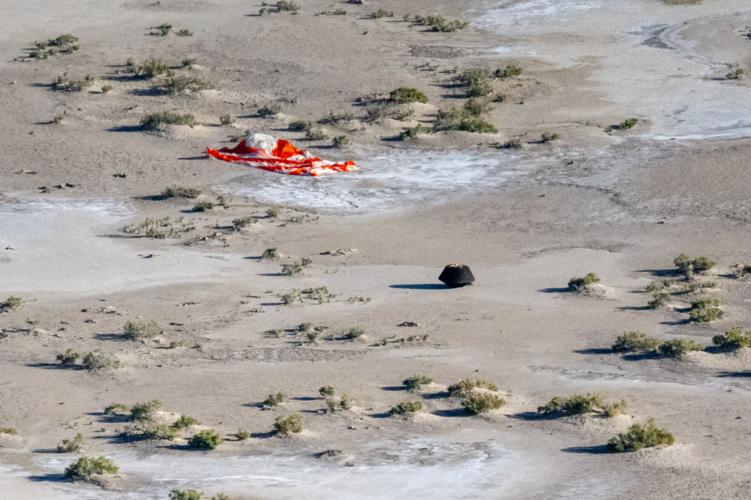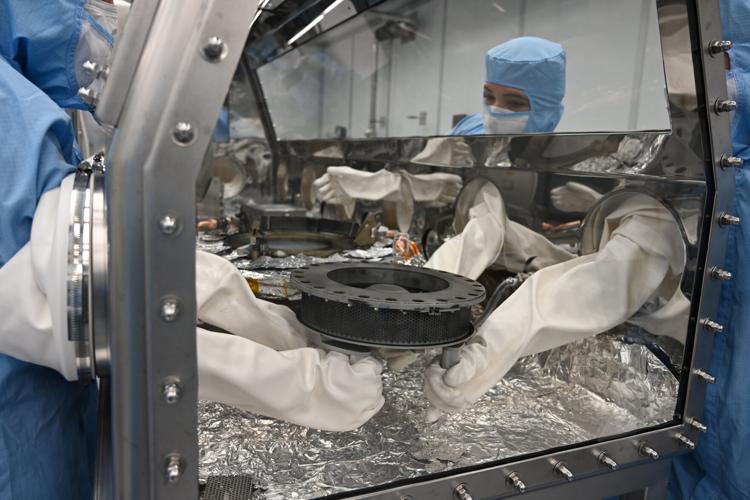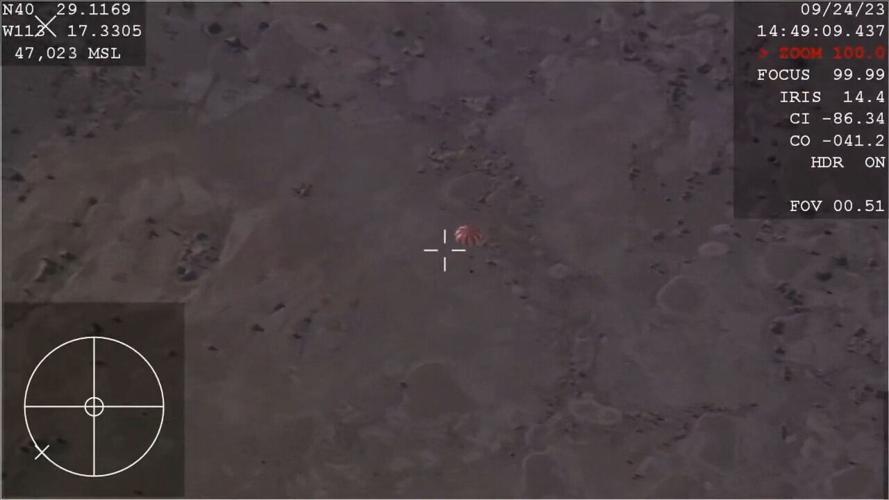The Sept. 24 landing of the OSIRIS-REx space capsule was a historic success, but it wasn’t perfect.
NASA has confirmed that the capsule’s parachute system did not work properly during its rapid reentry and descent through the Earth’s atmosphere.
A small drogue chute designed to slow the capsule failed to deploy at an altitude of about 100,000 feet. Instead, the unused drogue was jettisoned when the main chute unfurled at 9,000 feet to carry the precious cargo of asteroid samples softly to the ground at the Utah Test and Training Range west of Salt Lake City.
“There was no negative impact to OSIRIS-REx’s (asteroid) sample as a result of the unexpected drogue deployment,” the space agency said in a news release Tuesday. “The main parachute deployed as expected, and its design was robust enough to stabilize and slow the capsule, resulting in a safe landing more than a minute earlier than expected.”
The Sept. 24 touchdown marked the dramatic end of a 7-year, $1.1 billion space mission — conceived at and led by the University of Arizona — to bring back pristine rocks and dust from the asteroid Bennu.
The contents of the capsule are still being processed at a special lab NASA built for the job at Johnson Space Center in Houston, but the amount cataloged so far already exceeds mission objectives and ranks as the most material brought back from space since Apollo 17.
The problem with the parachute appears to be a literal case of crossed wires.
NASA officials have determined that inconsistent labeling on the design plans for the capsule likely caused engineers to wire the drogue’s release triggers to fire in the wrong order.
Instead of signaling for the small chute to deploy at 100,000 feet, the onboard system told the drogue to cut itself free while it was still packed inside the capsule. Then when the main chute deployed a few minutes later, the drogue came out, too, but immediately fell away because its retention cord had already been cut.
Questions about the parachutes came up during a post-landing press conference held in Utah on Sept. 24, shortly after the capsule was recovered. At the time, officials with NASA and Lockheed Martin Space Systems, which built OSIRIS-REx, told reporters that the drogue likely had deployed but could not be seen on the cameras monitoring the descent.
That lack of visual confirmation only increased the tension for an already anxious Dante Lauretta, the UA Regents’ Professor who leads the OSIRIS-REx science team as principal investigator.
During the capsule’s descent, Lauretta was strapped into a helicopter, waiting with the rest of the recovery team to rush out and secure the landing site. He later said he could tell from the radio traffic that something didn’t happen quite the way it was supposed to.
“It was pulse pounding … waiting for that main chute to come out. And it worked. It worked spectacularly well,” he said during the Sept. 24 press conference. “Boy did we stick that landing. It didn’t roll. It didn’t bounce. It just made a tiny little divot in the Utah soil.”
NASA disclosed the parachute problem after what it called “a thorough review of the descent video and the capsule’s extensive documentation.”
To confirm the cause of the malfunction, NASA engineers plan to test the system responsible for releasing the chutes.
It’s unclear how soon that testing might happen. At the moment, the hardware is sealed inside a sterile glovebox at the OSIRIS-REx Sample Curation Laboratory at Johnson, while scientists painstakingly collect every speck of dust that was brought back from Bennu.
Lockheed Martin engineers are also eager to get their hands on the capsule to see how it worked.
That’s the benefit of touching down in Utah instead of someplace far less convenient, said Tim Priser, the company’s chief engineer for deep space exploration.
“When we land on Mars, we don’t have a lot of opportunity to go collect the parachute, put it in a bag and analyze it, or grab the avionics so we can go troubleshoot and understand how well they behaved,” he said during the post-landing press conference.
“Something in our sequence may or may not have behaved itself exactly the way we expected it to, but the subsequent things in the sequence made up for that,” Priser added. “The (main) parachute came out and we touched down as soft as a dove. It was just beautiful.”






